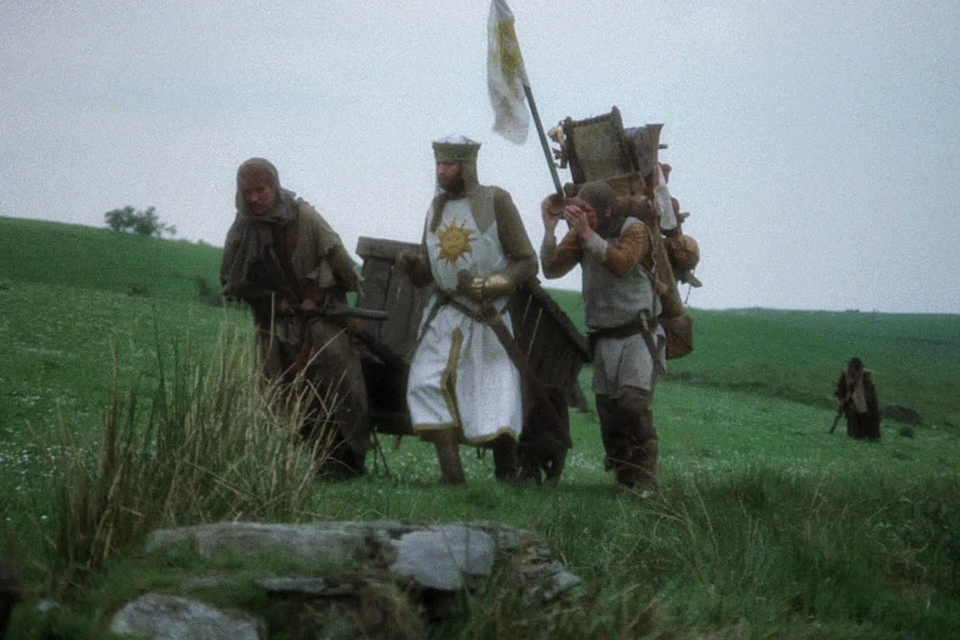How to envisage the future? And does literature play a part? Basically this is the question asked in a series of thoughtful articles and ruminations published in the latest issue of Arthuriana, which focus on the Arthurian as a cultural tourist.
Most obvious is this featured in an article by Kathleen Coyne Kelly on “The Eco-Tourist, English Heritage, and Arthurian Legend: Walking with Thoreau,” in which she walks the walk as an Arthurian from Tintagel to St. Nectans Kieve, while at the same time reflecting on the consequences of the heritagisation of the landscape. But the same perspective is also present in a beautifully crafted article by Robert Rouse on Gerald of Wales and his musings about Caerleon as seen through the colonialist history of Britain by Geoffrey of Monmouth. Further the theme of cultural tourism is present in the analysis of the Wirral as Sir Gawain enters this particular wilderness in search of the Green Knight. Finally we are treated to the story of how the “mad biker chieftain”, John Timothy Rothwell, alias Arthur Pendragon came to use the Arthurian Legend in his political struggles against the heritage-obsessed elites of the British establishment.
Weaving through these very dense articles is not at all easy. Eco-criticism whereby literature is allowed to play its role in the present eco-crisis is never easy. However one specific question is raised again and again – but most specifically in the article on the Arthurian Eco-tourist by Kelly: what do we do with the reality of our crumbling ruins, starved soil and disappearing natures if we are not allowed to dream about a future where they are present as much more than just ephemeral recollections of times past? And how can we do that if we don’t know “our literature”? Is it at all possible to properly experience the English and Welsh Landscapes without for instance having read Gerald of Wales, reading Geoffrey of Monmouth retelling the Arthurian legend of Nennius in his Historia Regum Britanniae? Or standing at Dozmary Pool without remembering Dennis the Peasant exclaiming: Listen strange woman lyin’ in ponds distributin’ swords is no basis for a system of government. Supreme executive power derives from a mandate from the masses, not from some farcial aquatic ceremony (As quoted by Kathleen Coyne Kelly from “Monty Python and the Holy Grail”).
I for one suspect that visiting Caerleon should never be just about the ruins of the Roman legionary fortress, nor should it be about whether it was Camelot or not. More than anything I believe it is also a place of dreams entered through the evocative texts of bygone literates and scholars paving our way through these mythical and mystical landscapes. As Tintagel, Dozmary Pool and Merlin’s Cave are Victorian inventions, Caerleon may very well be the medieval (re)invention par excellence. It is as such it (also)merits our attention.
However the experience “that Kilroy was there” needs these places in situ and thriving. As such these places are more than mere heritage. They are living testimonies to the inspiration, which literates and politicians long gone could harvest from viewing them through their especially tinted glasses. It is in this way they open up their vistas as layers upon layers of stories and myths parading in front of our eyes. Without these we would face a strange and void future without histories.
The question not raised in the articles in Arthuriana is however: how to communicate this to the illiterate classes, to whom we (nearly) all belong nowadays?
SOURCE:
The Eco-Tourist, English Heritage, and Arthurian Legend: Walking with Thoreau
By Kathleen Coyne Kelly
In Arthuriana Volume 23, Number 1, Spring 2013
READ MORE:
Read more about the articles in Arthuriana Volume 23, Number 1, Spring 2013
